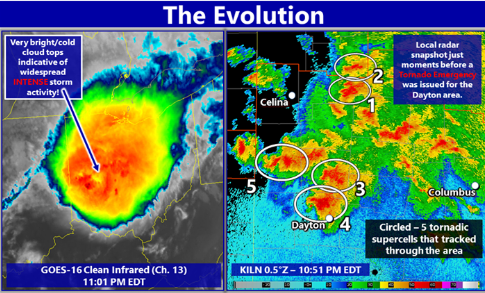Last year’s Memorial Day and the days to follow would go down in Ohio history as one of the devastating and costly devastation in Ohio.
The Memorial 2019 tornado outbreak will always be one to remember for many across the state especially in the hardest hit areas in Dayton and the Miami valley.


Throughout Ohio there were a total of 21 tornadoes on May 27 2019. Among the 21, there was one EF4 and three EF3s which consisted of long-track tornadoes that left a heartbreaking aftermath. Ohio is accustomed to tornadoes during the spring time and early summer, but rarely like the monstrous tornadoes on last Memorial day.
The greatest destruction came from an EF4 tornado tore through the town of Trotwood, Ohio and parts of Dayton. This devastating tornado had winds of 170 mph with a path 0.6 miles wide and stretched 20 miles long.
Another long-track tornado was an EF3 that destroyed areas in Beavercreek, Ohio. There was winds of 140 mph and a path of 0.7 miles wide and 10 miles length.
Another hard hit city, Celina, Ohio was impacted by an EF 3 tornado that claimed the life of an 82 year old man which would be the only immediate fatality of the night. This tornado had 150 miles per hour. The path was narrower at 250 yards but still traveled 11 miles on the ground.
So many homes and buildings were destroyed in the wake of numerous severe storms and several supercells. Supercells are distinguishable by their large-scale rotation and are known for producing powerful tornadoes. Supercells are more common in central US but can happen in the Ohio valley.
At 10:51 PM there were 5 tornadic supercells that tracked through Dayton and northern Miami valley.
Most of the severe weather and tornadoes happened in the middle of the night. Tornado warnings began being issued shortly before 9 PM and continued past 2-3 AM in the morning. According to the NWS in Wilmington, Ohio, they issued more tornado warnings in just over 5 hours than in the entire years of 2012, 2013, 2014, 2015, 2016, 2017, or 2018 for their given forecast area!
The clean-up and rebuilding of damaged areas lead to thirty thousand claims across Ohio. The cost of insurance companies exceed 480 million making this the fourth most destructive act of Mother Nature in Ohio history.



